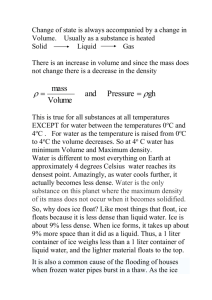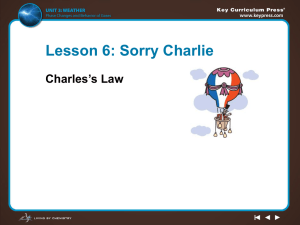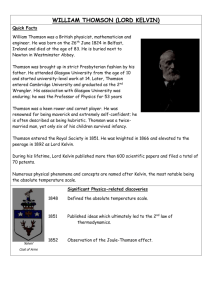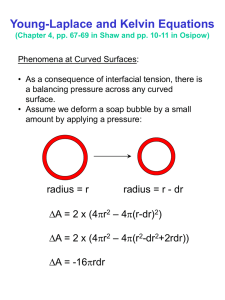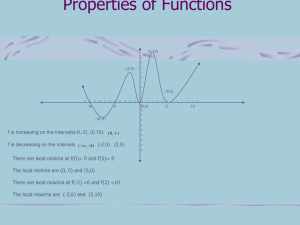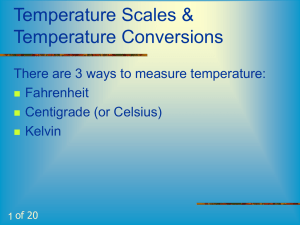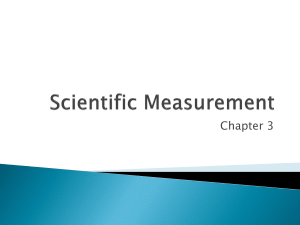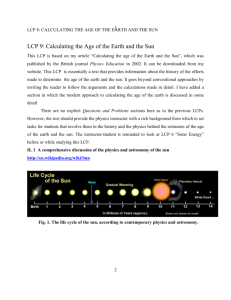Absolute Zero
advertisement
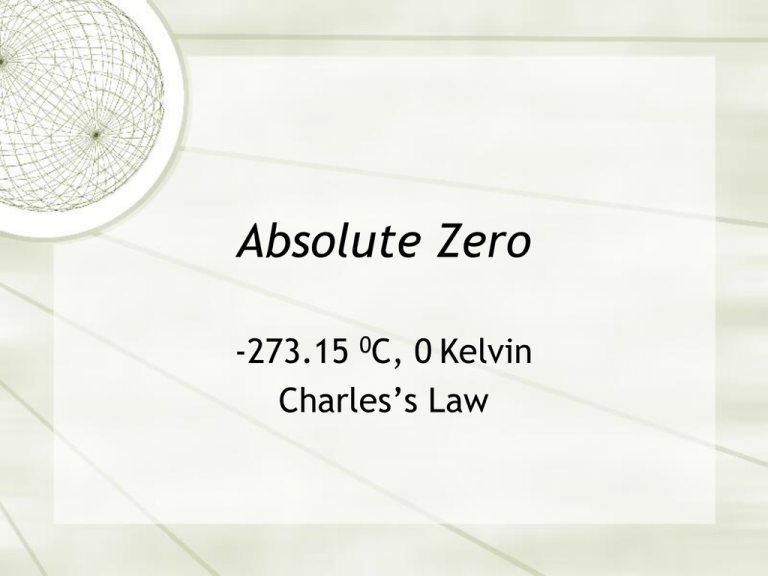
Absolute Zero -273.15 0C, 0 Kelvin Charles’s Law Absolute Zero Theoretically, absolute zero is the lowest temperature that can be reached. Absolute zero has never been reached. Temperatures within a millionth of a degree above -273.15 0 C have been achieved! Lord Kelvin The Kelvin scale is named after Lord Kelvin and his scale starts at 0 degrees Kelvin, which is called absolute zero. The Kelvin Scale measures the coldest temperature there can be. Lord Kelvin 1824 - 1907 Lord Kelvin said there was no upper limit of how hot things can get, but there was a limit as to how cold things can get. Kelvin developed the idea of Absolute Zero: - 273.15 degrees Celsius! At this temperature, no heat energy remains in a substance, the average kinetic energy is zero and all molecular motion ceases. Kelvin Scale - 273.15 0C is usually rounded to - 273.15 0C The zero point on the Kelvin Scale is absolute zero K = 273 + 0C Kelvin is the SI unit of temperature Charles’s Law V1/T1 = V2/T2 By measuring and graphing the volume and temperature of a gas and extrapolating to 0 volume, absolute zero can be determined. Straight Line Equation y = mx + b y and x are variables y = temperature x = volume m and b are constants m = slope of the line b = y intercept Straight Line Equation y = mx + b When b = 0, the line equation is: y = mx + b This is a direct proportion -- the special case of a straight line having a y-intercept = to zero. Straight Line Equation y = mx + b When b = 0, the line equation is: y = mx + b In Charles Law: y = Volume x = Kelvin Temperature m = k2 proportionality constant for a particular pressure Charles’s Law Charles’s Law states: At constant pressure, the volume of a fixed amount of gas is directly proportional to its absolute temperature. K2 = V/T V1/T1 = K2 = V2/T2 V1/T1 = V2/T2 Linear Regression Linear regression analyzes the relationship between two variables, X and Y. For each subject (or experimental unit), you know both X and Y and you want to find the best straight line through the data. In some situations (like finding absolute zero), the slope and/or intercept have a scientific meaning. Linear Regression The goal of linear regression is to adjust the values of slope and intercept to find the line that best predicts Y from X. The slope quantifies the steepness of the line. It equals the change in Y for each unit change in X. It is expressed in the units of the Y-axis divided by the units of the X-axis. The Y intercept is the Y value of the line when X equals zero. It defines the elevation of the line. TI-83 Linear Regression Clear Previous Data: Stat Up arrow to L1 Clear Enter Move cursor arrow to L2 Clear Enter TI-83 Linear Regression Enter x values: < Enter all x values in L1 Enter after each value TI-83 Linear Regression Enter y values: > Enter all y values in L2 Enter after each value TI-83 Linear Regression Find slope (b), Intercept (a), and correlation coefficient (r): Stat Move cursor to calc 8 2nd 1 , 2nd 2 Linear Regression If the slope is positive, Y increases as X increases. If the slope is negative, Y decreases as X increases. The Y intercept is the Y value of the line when X equals zero. It defines the elevation of the line. Linear Regression Is the slope positive or negative for determining absolute zero? 30 25 20 15 10 5 – 273 0 Temperature (C) 100 Volume (mL) Volume-Temperature Graph


